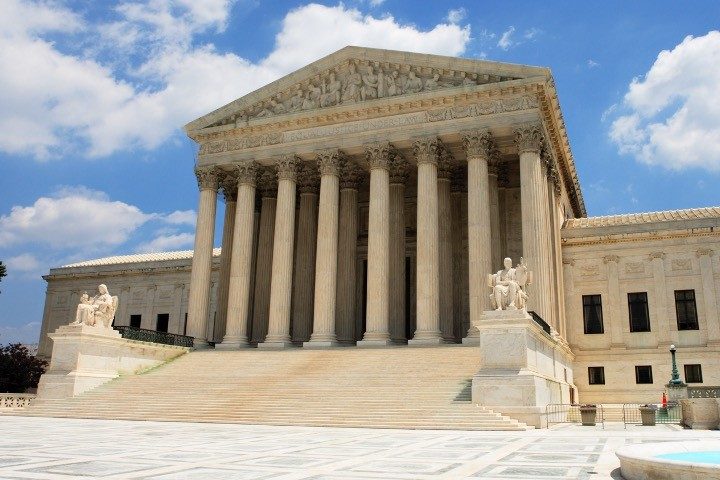
In a landmark decision on Wednesday, the Supreme Court dismissed a challenge accusing the Biden administration of colluding with Big Tech companies to censor social media posts deemed “misinformation” about Covid-19 and other topics. The plaintiffs argued that these actions violated the First Amendment by suppressing dissenting views, including those related to the pandemic and the 2020 presidential election.
The Majority Opinion
The 6-3 ruling concluded that the plaintiffs in the Murthy v. Missouri case, led by the attorneys general of Louisiana and Missouri, lacked standing to bring the case. Justice Samuel Alito, joined by Justices Clarence Thomas and Neil Gorsuch, dissented strongly, warning that “the country may come to regret” the majority’s decision.
Justice Amy Coney Barrett, writing for the majority, clarified that the plaintiffs failed to demonstrate a substantial risk of imminent harm that could be directly linked to the government’s actions and subsequently addressed by the injunction they sought. Barrett wrote,
We begin—and end—with standing. At this stage, neither the individual nor the state plaintiffs have established standing to seek an injunction against any defendant. We therefore lack jurisdiction to reach the merits of the dispute….
To establish standing, the plaintiffs must demonstrate a substantial risk that, in the near future, they will suffer an injury that is traceable to a Government defendant and redressable by the injunction they seek. No plaintiff has carried that burden.
Barrett acknowledged that while the government “for sure played a role in at least some of the platforms’ moderation choices,” the social media platforms had independent reasons for regulating content. “The platforms moderated [the Covid-19 and election-related] content long before any of the Government defendants engaged in the challenged conduct,” she wrote, quoting examples of how Facebook, Twitter and other platforms flagged or banned content, “[exercising] their own judgment,” and even when the government asked the platforms to suppress certain content, these requests perfectly matched the platforms’ existing policies.
She stressed,
The plaintiffs claim standing based on the “direct censorship” of their own speech as well as their “right to listen” to others who faced social-media censorship. Notably, both theories depend on the platform’s actions—yet the plaintiffs do not seek to enjoin the platforms from restricting any posts or accounts. They seek to enjoin Government agencies and officials from pressuring or encouraging the platforms to suppress protected speech in the future.
The justice stated that the plaintiffs could not establish a direct, traceable connection between specific government actions and the alleged harms, and consequently could not claim they would suffer any such harm in the future from these same actions:
The plaintiffs rely on allegations of past Government censorship as evidence that future censorship is likely. But they fail, by and large, to link their past social-media restrictions to the defendants’ communications with the platforms. Thus, the events of the past do little to help any of the plaintiffs establish standing to seek an injunction to prevent future harms.
Barrett also addressed the plaintiffs’ arguments, which interpreted the First Amendment as protecting people’s “right to listen” and be exposed to various opinions. She indicated that this interpretation suggested any social media user could potentially sue over another user’s censorship, which does not meet the legal criteria for standing.
The Dissenting Opinion
Justice Alito’s dissent argued that the actions of administration officials were “blatantly unconstitutional.” He cited communications from officials to social media company employees, such as “persistent inquiries, criticisms, and threats,” which he described as coercive. Examples included urgent demands to remove accounts and posts, emphasizing the high-level concern within the White House about certain content.
Alito wrote, “Government officials may not coerce private entities to suppress speech,” adding,
The Court … shirks [the duty to tackle the free speech issue that the case presents] and thus permits the successful campaign of coercion in this case to stand as an attractive model for future officials who want to control what the people say, hear, and think.
That is regrettable. What the officials did in this case was more subtle than the ham-handed censorship found to be unconstitutional in Vullo [National Rifle Association of America v. Vullo], but it was no less coercive. And because of the perpetrators’ high positions, it was even more dangerous. It was blatantly unconstitutional, and the country may come to regret the Court’s failure to say so. Officials who read today’s decision … will get the message. If a coercive campaign is carried out with enough sophistication, it may get by.
The Injunction and Its Implications
The lawsuit filed in May 2022, which included claims relating to activities occurring in 2020 and earlier, was centered on preventing social media companies from banning users based on their political views, even if those users violated platform policies. Although some allegations dated back to when Donald Trump was president, the district court ruling on the case primarily focused on actions taken after President Joe Biden took office in January 2021.
On July 4 last year, Louisiana-based U.S. District Judge Terry Doughty issued a sweeping injunction barring officials from various government agencies from communicating with social media companies to “coerce or significantly encourage” the removal of content containing protected free speech. Doughty described the alleged actions as potentially the most significant attack on free speech in United States history, asserting that the plaintiffs were likely to succeed in proving the government, whom Doughty likened to the Orwellian Ministry of Truth, had used its power to silence opposition.
Among those bound by the injunction were President Biden, U.S. Surgeon General Vivek Murthy, and White House Press Secretary Karine Jean-Pierre, as well as officials from the Food and Drug Administration (FDA), the Centers for Disease Control and Prevention (CDC), the Treasury Department, the State Department, the U.S. Election Assistance Commission, the Federal Bureau of Investigation (FBI), and the entire Departments of Justice (DOJ) and Health and Human Services (HHS).
The Appeals Court Decision
On September 8, 2023, the New Orleans-based 5th Circuit Court of Appeals had partially upheld Doughty’s injunction, but narrowed its scope, still prohibiting the government from pressuring or encouraging social media companies to remove content considered misinformation.
While the case prominently featured Covid-19-related censorship, it also touched on efforts to suppress reports about Hunter Biden’s laptop ahead of the 2020 election and, later, evidence of the 2020 election fraud.


